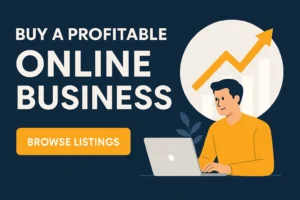Table of Contents
ToggleWriting headlines has always been a challenge for every writer, blogger, and content specialist. Writing attention-grabbing headlines is a part of effective writing skills. A great headline makes people click – sometimes without them meaning to – because it’s clever or interesting or ridiculously compelling.
So, if you want your visitors to find articles and relevant content, you must create compelling headlines. You have to write a headline that will stand out from the crowd and be relevant to your specific topic and interesting to readers.
How can you write a great headline?
Creating catchy headlines requires some research and knowledge of your audience. If you’re looking to increase your website’s traffic and click-through rate, you need to create a headline that reaches your targeted audience. There are many techniques to write a headline that will grab readers’ attention and get them to click.
Active voice

Active voice is a powerful writing style that engages your reader and makes your headline more compelling. It’s also more readable because it implies that the subject is doing something. Using the active voice is also a more personal way to make your headline. Whenever possible, avoid using passive voice.
Professional writers know that passive voice kills good content. They understand that readers can tell the difference between passive and active voices. The result is great headlines that readers love and content that converts into sales. Use an app like Grammarly to check your headline to ensure that you’re using active voice.
Passive voice headlines don’t give the reader agency. They tell the reader that someone did something and that something happened to them. Using the active voice gives the reader the agency to act. But this style of writing can be confusing. You’re supposed to give the reader some agency, so make sure you use the active voice when possible.
Active voice is a more direct and concise way to say what happened. It also makes your copy easier to read. People tend to read faster and understand more when it’s written in this way. Use active voice when writing about a person, place, or event. You’ll get a lot more readers to read your content if you use active voice in your headlines.
Effective headlines usually involve strong, present-tense verbs that are driven by strong, logical sentences. In addition to using the active voice, make sure to capitalize the first word of your headline. Proper nouns should be capitalized, but most other words in a headline should be in lowercase. The verbs in a headline should be in the present tense if the information has just happened. In contrast, the past perfect or future tense are best for describing events that are happening in the future.
Passive voice
If you want to use the passive voice in a headline, you need to be aware of several tips. The first of these tips is to check whether you are using the active or passive voice. When writing a headline, the active voice is used more often, while the passive voice is used less often. If you find a sentence using the passive voice, try changing it to the active voice.
Using the active voice in your headline will be more enticing to readers. Using the passive voice will take the reader out of the action and will make your headline less readable. The active voice, on the other hand, is more effective because it engages readers by using short action verbs. Also, make sure you use quotation marks and well-placed punctuation, because it adds style and a cleaner read.
Professional writers know that passive voice kills good content. They use the active voice, which puts more emphasis on the subject. The active voice is easier to read, especially when there is limited space. For example, passive voice headlines contain five words while active ones contain seven words. You can use apps like Grammarly to check for passive voice.
In writing, passive voice is less common than the active voice. Many inexperienced writers think that using more words will make them sound smarter. On the contrary, passive-voice wordiness makes you sound stupid. The active voice is a better choice for headlines and body copy. It makes the writing flow much better, with less confusion and unnecessary words.
For example, if your headline is referring to a court session, use the verb “hearing”. This will make the reader think that the author is talking about the court session. For example, “hearing” refers to a hearing in court. The primary function of the ear is hearing.
Numbers

Numbers are a great way to catch a reader’s attention in a headline. Not only do they create expectations, but they also create a logical structure for the information in the headline. It also helps you make your headline more digestible and authentic to readers. Whether you’re writing an article or a news story, using numbers is an excellent way to grab the reader’s attention.
The headline is the first thing people see when they open a page. It’s important to capture their attention. While you’ve probably noticed that eight out of ten people only read the title of your article, this is not enough to keep them reading. To catch their attention, you need to make a headline that links to the body of the content. There are several ways to do this, but the best approach is to use storytelling and data-driven content. To improve your headline writing skills, practice writing consistently and try new headline writing techniques.
Another way to grab attention is by using a question in your headline. If people think that you’re asking a question, they’re more likely to click on your headline. Use a question to attract readers and make them want to learn more about what you’re offering.
Using parentheses or brackets
Using parentheses or brackets in your headline is one way to make your content more memorable. They can also help you make strategic use of numbers. For example, if you want to say, “The president’s GPA is 3.39,” you can use parentheses.
Using parentheses and brackets is one way to add more detail to your writing without overdoing it. It also allows you to add helpful information without worrying about ambiguity. A common use for parentheses is to specify the singular or plural of a word or number, explain abbreviations, and add personal comments.
Using parentheses and brackets in your headline can increase your headline’s click-through rate. You can also use them as a credibility booster, encouraging readers to read the entire article. Think of them as a short sub-headline that provides another reason to click on your link. According to a recent study by Outbrain, using parentheses or brackets in your headlines increased click-through rates by up to nine percent.
When writing headlines, you should remember that your target audience is the most important part of your content. Remember that they don’t want to read much information but want to get what they want as quickly as possible. For instance, they may be looking for a quick fix or some tips and tricks, and if your headline can convey that, it’s a winner!
What is a Headline Analyzer?

A headline analyzer, also known as a title tag checker, is an online tool that analyzes the keywords in any given headline. Any site itself has its own set of keywords used to describe its main topic or theme. These keywords are usually placed within the headline or article titles for better search engine optimization (SEO).
There are many tools or extensions for browsers that can highlight keywords on any web page, but an essential aspect is ensuring that these keywords are relevant to what you are targeting. There are various online headline analyzer services available on free sites, but there are also paid ones that provide detailed reports about your article’s headlines after you submit them.
Importance of Headlines!
Headlines are significant for increasing website traffic due to their SEO capabilities. Every webmaster’s goal is to have their articles/blogs/sites on the first page of any given search engine, huge ones such as Google or Yahoo! However, it takes time and effort to rank high in the search engine results pages.
Headlines optimized for a specific keyword or phrase rank higher in the search engine results pages (SERP). For instance, if a user searches for On SEO. It is very likely that articles with headlines such as “How to become an On Page SEO Expert in 2025” will have a higher chance of being displayed on the first page of the SERP.
Two elements that play a vital role in creating a compelling headline are its keyword density and reading level. The specific amount of keywords included should be appropriate to what the article is about while keeping it at a reading level appropriate for the target audience.
An analyzer will help you determine whether your given headlines meet these requirements and provide suggestions on keywords that can be added to increase the SEO value of your articles.
5 Best Headline Analyzers to Help Your Blog Stand Out From the Crowd
The headline analyzer tool can help you choose the perfect headline for your content – one that will mean more clicks and better engagement.
The following five headline analyzer tools can help you get there. They’re top-notch, tried, and true resources that will make your headlines sing like nobody’s business. Let’s take a look at them now!
1. CoSchedule
This headline analyzer tool is one of the most popular because it combines the simplicity of an elemental online headline analyzer with an easy-to-use web application. To get your headline analyzed, all you have to do is insert it and choose your desired social media platform from the dropdown menu.
It allows you to enter any headline (in the box where it says “Enter your headline here”) and has three potential score areas: Great, Good, and Fair. Every title will fall into one of these three categories. The Headline Analyzer will give you feedback about why the score is what it is, and if you click on “analysis,” it’ll tell you how to make your headline more effective and amazing! Isn’t it?
What’s also interesting about this tool is that it tells you how many characters are in your headline and how many words are in it! Knowing this information can be helpful, especially if you are trying to fit a lot of keywords into one title. It’s also completely free to use. Simply sign up and start writing fantastic headlines!
2. Sharethrough Headline Analyzer
Do you need help coming up with great headlines for your blog posts? Sharethrough’s Headline Analyzer was explicitly designed for you.
It assists you in analyzing headlines to determine what tones are present in your writing. It offers fantastic features; by utilizing them, you can create perfect, appealing, and engaging headlines that users will undoubtedly click!
The tool analyzes headlines for key elements such as emotional appeal, sentiment, and specificity. It shows real-time results on each element, letting marketers learn what works and why.
How do you optimize headlines for social media?

You could go the traditional route by A/B testing, but there’s no guarantee that your results will outperform industry benchmarks.
Why not try Sharethrough’s Headline Analyzer, an automated tool that quickly assesses how well your headline will perform on Facebook, Twitter, Pinterest, and LinkedIn? Sharethrough Headline Analyzer is an automated social media headline analyzer tool. It scans your headline and scores it according to 3 criteria: engagement, sentiment, and virality intent. The results are displayed in easy-to-understand graphs that can help you optimize your copy.
3. MonsterInsights
It’s easy to get caught up in the madness of writing titles that get clicks. Everyone knows that the title is one of, if not THE most important part of any blog post or article.
If you’re feeling like your headlines aren’t quite hitting the mark, then why not give MonsterInsights Headline Analyzer a try?
The MonsterInsights Headline Analyzer Tool is a great way to find out what people are most likely to click on in your headlines or copy. And Headline Analyzer will look at several factors, including:
- Emotional appeal Curiosity
- Each factor has a score between 0 and 100. Scores below 50 are considered low-scoring. Scores above 50 are high-scoring.
- The MonsterInsights Headline Analyzer gives you a score for each factor it analyzes, helping you identify where your headlines can improve to attract more readers.
Headline Analyzer will compare your headline with the best-performing headlines on the internet. It uses data from Facebook campaigns, Google Adwords, and Buzzfeed articles, which are constantly updated.
It lets you analyze headlines for common characteristics people are likely to click on. Try them out and see what a difference they can make to your headings!
4. SEOPressor Blog Title Generator
Chances are, you’ve heard of SEOPressor, the WordPress plugin that automatically optimizes your posts for search engines.
Well, SEOPressor has released an online blog title generator! This means you can create 100s of titles in seconds — without having to write them yourself.
SEOPressor Blog Title Generator generates various titles for your blog posts with some variations. There are multiple combinations to choose from and various features that users can use to create great titles!
You can use the SEOPressor Blog Title Generator to generate titles for your posts. The tool takes some time to get used to, but we are sure bloggers will appreciate the effort put into such a magnificent tool.
5. Impact Blog Title Generator
Sometimes, making an impact is as simple as using the right words. You may think that the title of your article is something you can slap together on the fly, but if you want to make an impact, it’s time to bring on some science.
Impact Blog Title Generator is an online tool that lays out a short and compelling title for your next blog post.
How it works: hit the button, type in some words, and get a title. It’s as simple as that!
It takes out all of the guesswork, so you can rest assured that your next big post will be an impactful one. You can even use this tool to write your following email subject line. So, give it a shot and make the most of this simple but powerful tool!
Before using these tools, you need to know what they do. They mostly rely on the following basic principles:
1. Sentence structures that are easy to read and understand generate well-performing headlines. Headlines containing grammatical inconsistencies, complicated words, long sentences, or passive voice usually fail to reach your audience.
2. The number of characters in a headline is relevant for gaining your audience’s attention. Using many characters in your headline is advisable when you want to attract visitors via social media. Still, it might cause the loss of key elements such as keywords and emotional words.
3. The headlines that include words such as “expert,” “secrets,” or “reviews” typically perform better than the ones that do not.
4. Articles written in the first person typically generate more shares than articles written in the third person or without personalization.
5. Headlines, including numbers, are typically shared more often on social media platforms because of their simplicity and appeal to readers’ curiosity. However, using too many numbers might cause the loss of other vital elements such as keywords and emotional words.
6. Headlines that include a call to action typically perform better than the ones that don’t.
7. Using emotional words in your headlines is an effective way of engaging your target audience. Still, too many expressive words might bring down other vital elements such as numbers and keyword phrases.
8. Headlines that contain a question are typically being shared more often on social media. However, the same rule applies to emotional words: too many questions might bring down other key elements such as numbers and keyword phrases.
Wrapping it up!
What’s the point of having online content if you don’t convince your visitors/customers about something? The headline is really important when it comes to convincing people, and it has to be eye-catching because you only have a few seconds to convince visitors to stay, read or click.
Every blogger claims to be a master of words and online content. In reality, most bloggers are struggling with attracting their readers’ attention.
These Headline Analyzer tools will help you find the perfect title for your piece of content. They work by examining your headline and letting you know if it’s working or not. If the analyzer thinks your headline is off, it will give you tips on fixing it.
So give them a try because they will help your content reach a wider audience due to the headline!






